
All of the equipment for our horses is based on actual historical examples, or depictions from historical sources, such as manuscripts. At present we are shifting our focus more towards the 15th Century, and our equestrian gear needs to mirror that. From bits and bridles based on drawings, to saddles based on ones in museums, to the curry comb we use to brush them and pick out their hooves, we try and make our equipment as historically accurate as we can.
Saddles
The right looking saddle is an important part of getting the right look. All our horses have custom fitted saddles made for them and their owners, based on historical examples, or from paintings/drawings from the time we are recreating.
Bukarest saddle
Phoebus’s saddle is a reconstruction of the war saddle from Bucharest in the Muzeul Militar National. The original was probably manufactured in a German speaking region towards the very end of the 15th C. This example is constructed with a solid timber tree and red leather. The saddle steels are modeled on the few that are preserved with the original saddle. Being fluted, heat treated, spring steel with pierced and gilt borders. Underneath are wool covered felt pads which provide no contact over the spine of the horse.
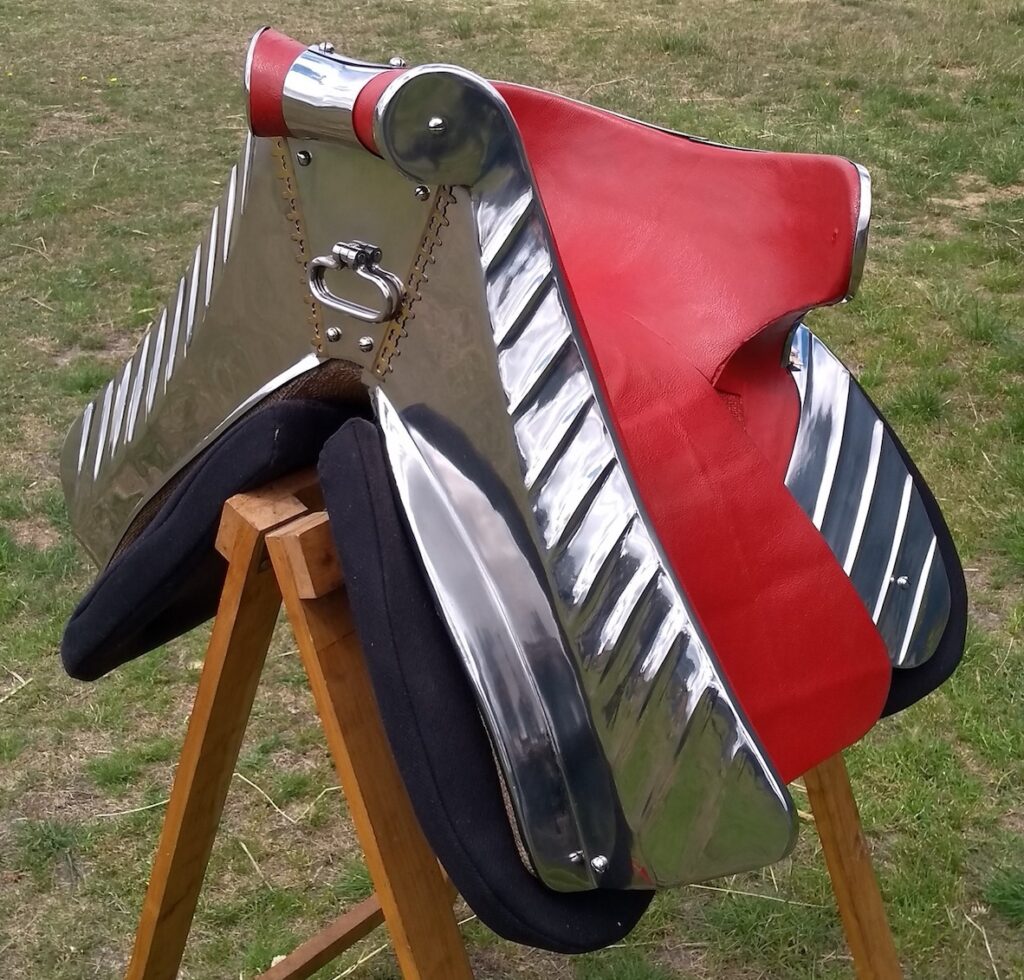



Frederick III saddle
A reproduction of a war saddle of Frederick III, preserved in the Hofjagd und Rüstkammer Vienna.
Made with a solid timber tree, reinforced with hessian. Finished with burgundy leather and woollen pads underneath. The saddle steels carefully shaped to fit the complex shape of the saddle and polished to a high finish.




1380’s Italian saddle
Algernon’s saddle is 1380’s Italian style based on the depictions in Guiron Le Courtois . It is made from a poplar timber core reinforced with hessian and covered with leather.
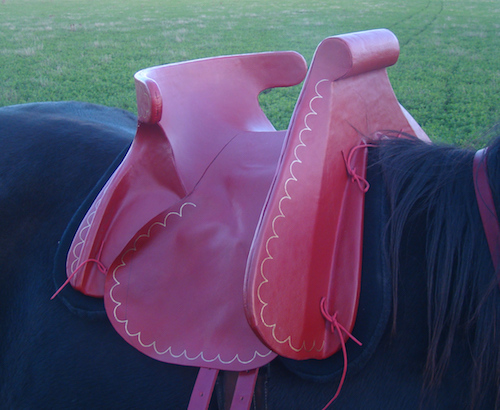

Vienna A64 saddle
Ruby’s saddle is based on the A64 saddle in Vienna. The original saddle is covered with carved and painted bone pieces, but we didn’t go to that extent for her reproduction. Again it is a timber core, with hessian, covered with leather, and decorated with brass strips.


Bits
The bits we use are also based on historic images. This particular one is based on some lovely line drawings by Pisanello from around 1450. This reproduction is made from stainless steel to keep it from rusting, and features brass bosses. The first bits we tried were not stainless and even with careful cleaning after each ride, have rusted. So the newer ones are now in stainless. We realise this is not historical, but it does save us a lot of work, and replacement bits.
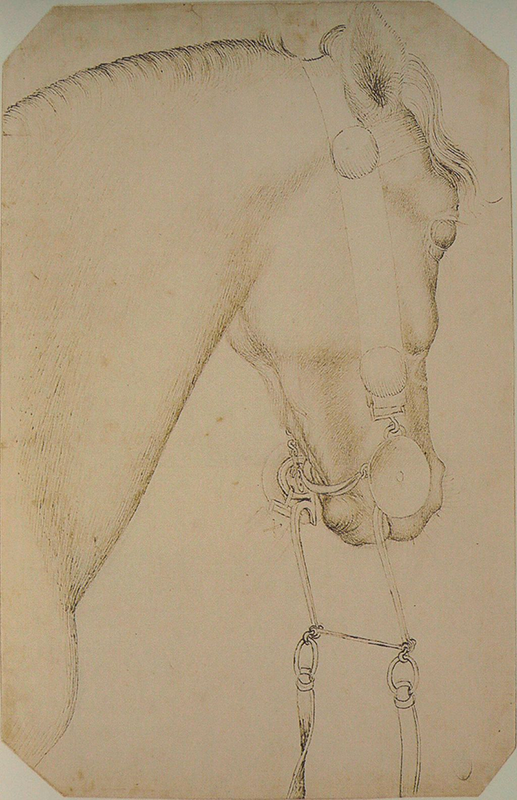


Horse armour
Various items of horse armour were used to protect horses, such as shamfrons (shaffrons) to protect the head, crinets to cover the neck, and other body protection that ranged from straps with metal bosses to full boiled leather or metal plates covering chest and croup.
We use decorated leather barding as well as shamfrons, all of which are based on historical objects.
The shamfron pictured below is based on an extant original piece that was owned by Ulrich von Matsch, from Castle Churburg. The original is Milanese around 1450.
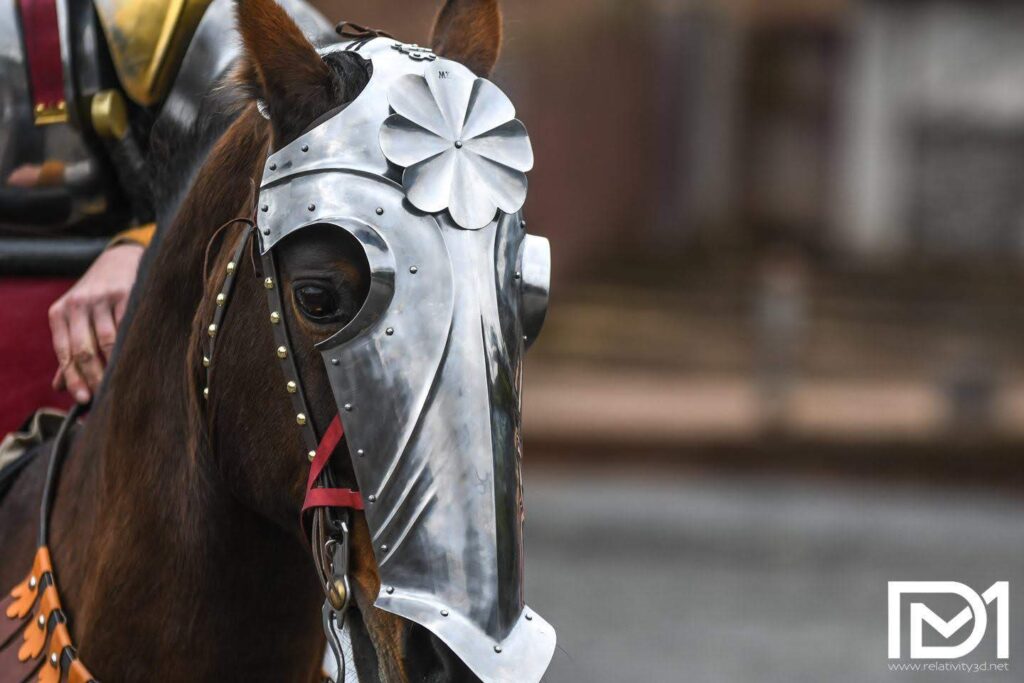


The second shamfron is also based on an original in the Churburg collection. Both shamfrons are still in the private collection of the Trap family at castle Churburg, Schulderns in Sud Tirol, which is now a part of nothern Italy.
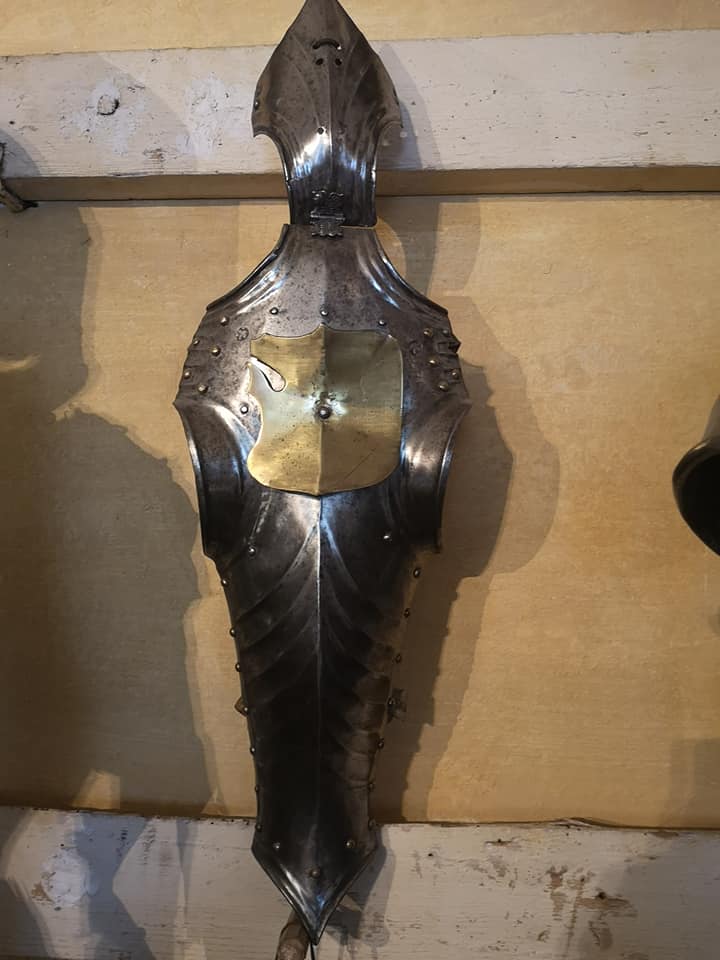

The third shamfron is made from cuir bouilli (hardenend leather). It is based on the only known surviving leather one but the form was taken from an image depicting the travels of John Mandeville from Prague.
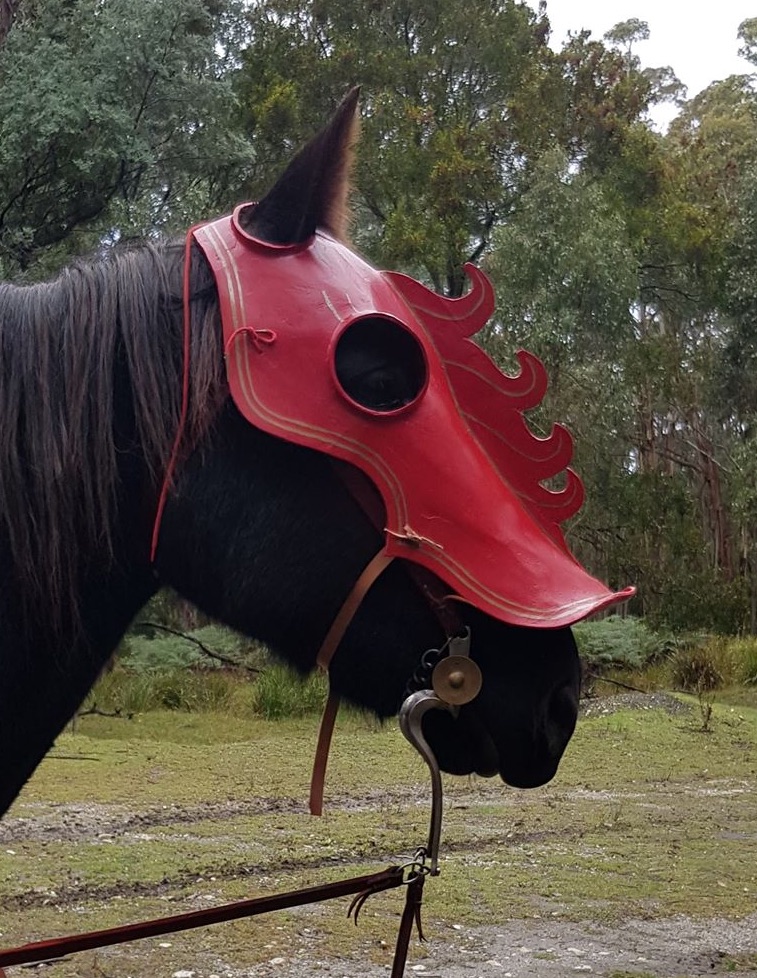


Bridles and barding
Ruby’s blue bridle is based on a painting by Hans Memling.
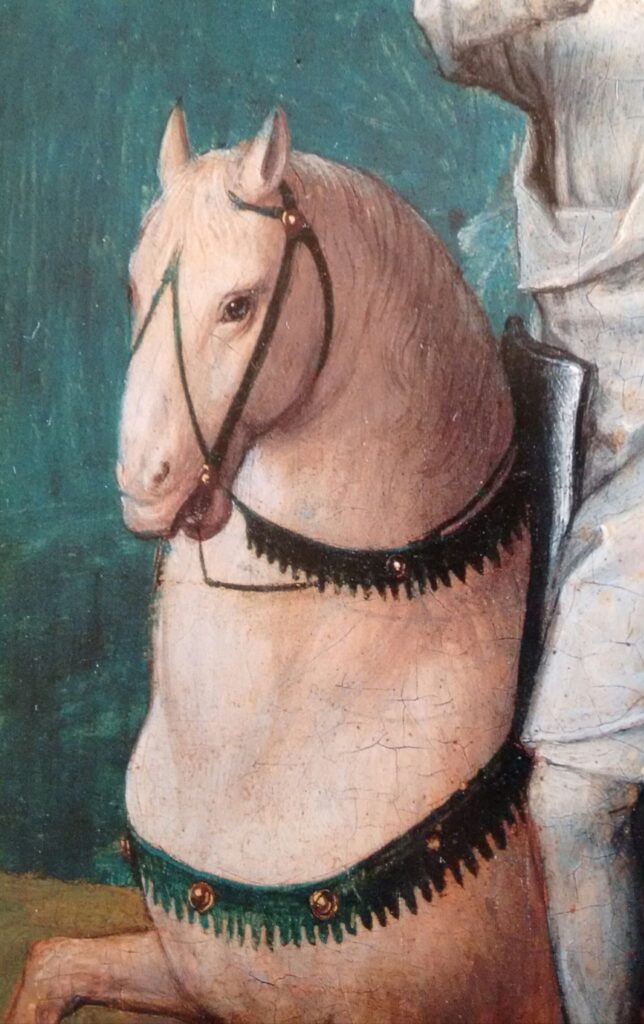

The matching blue barding is based on Bocaccio (1470).


Algernon’s barding is based on another painting by Hans Memling, Scenes from the life of Mary (1480).


Another set of barding is based on a picture from Le livre de chasse de Gaston Phoebus (1380).
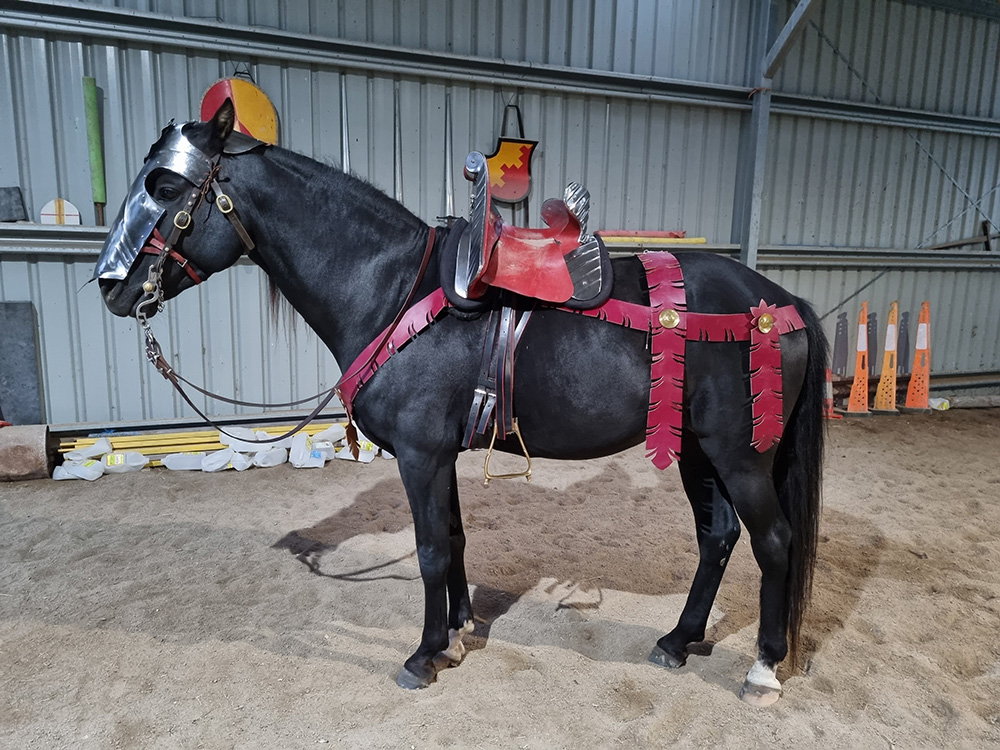
Stirrups
We use a variety of stirrups, all of which are based on historical examples.


